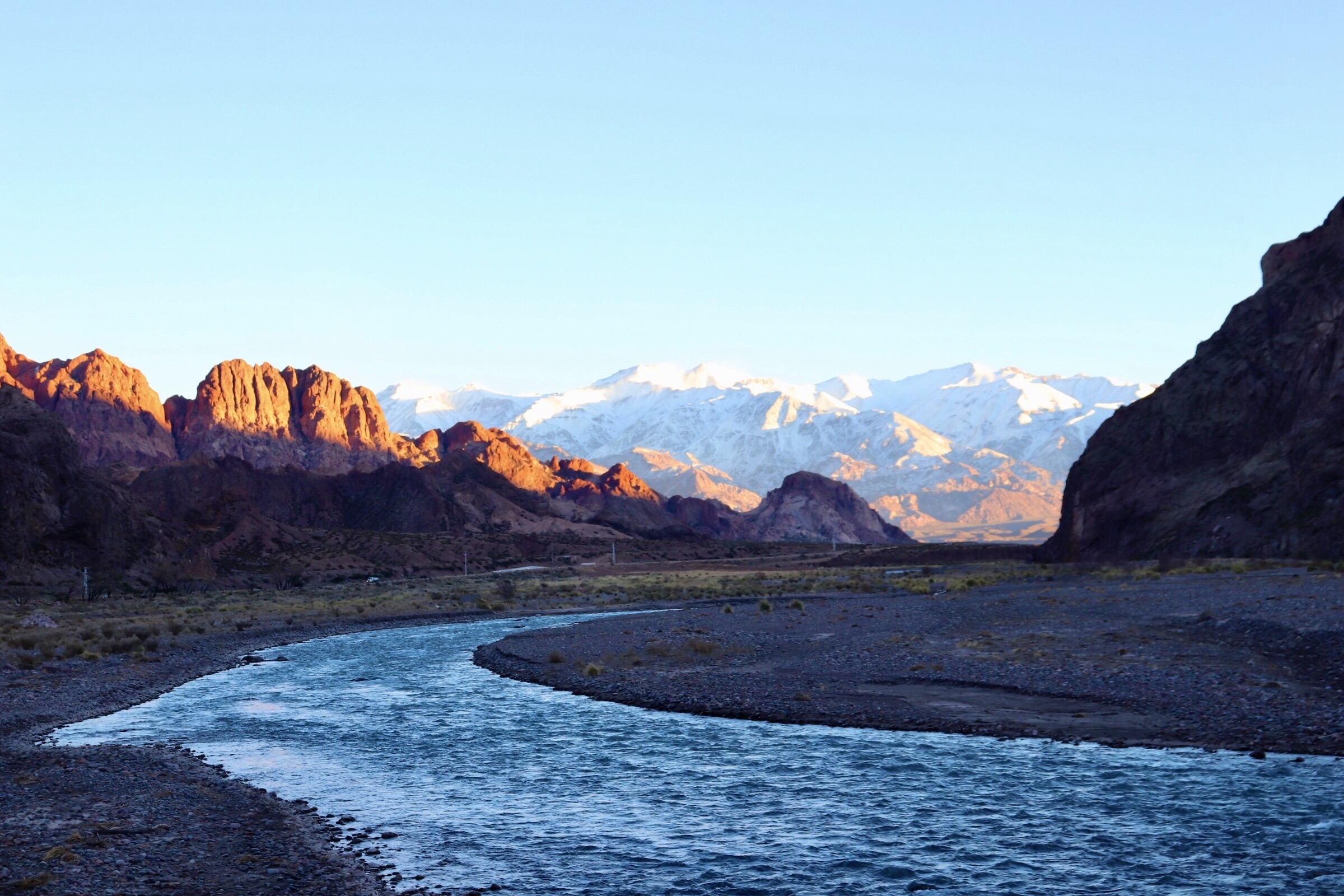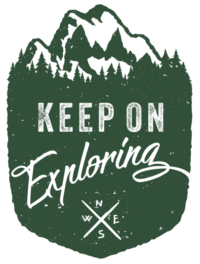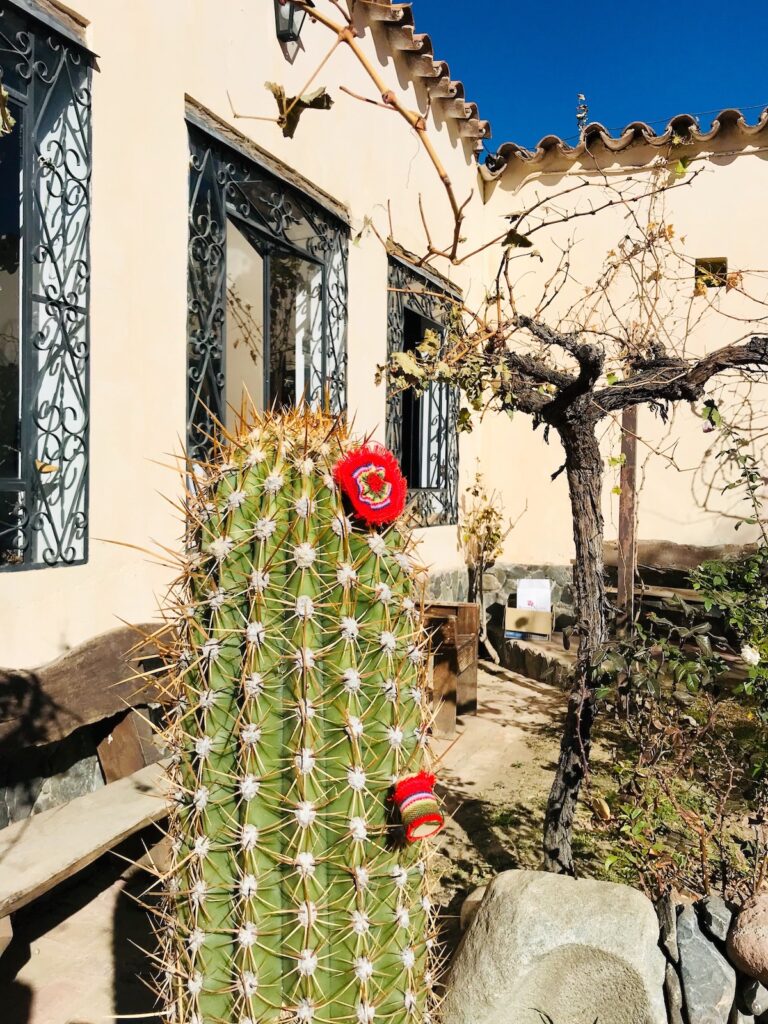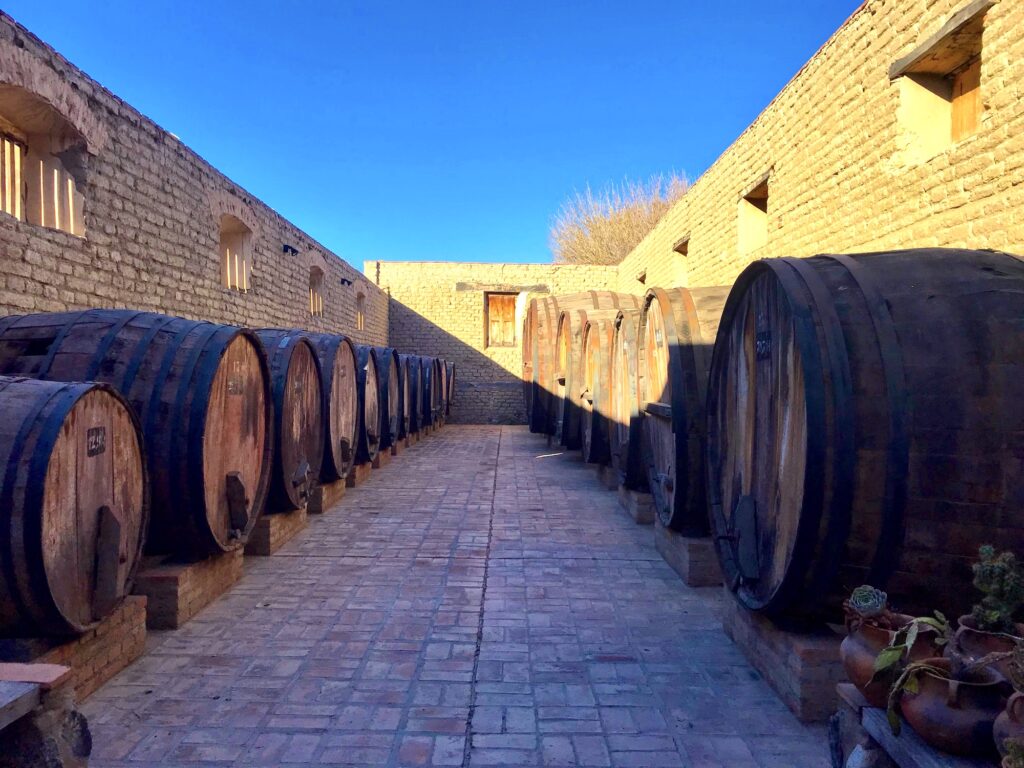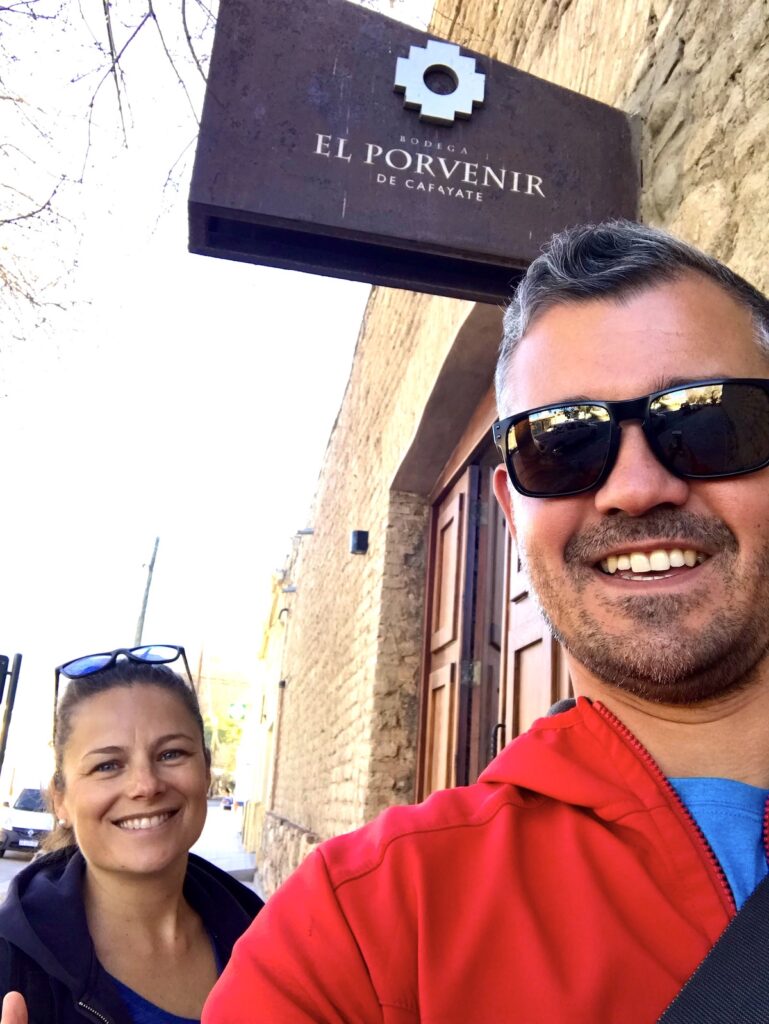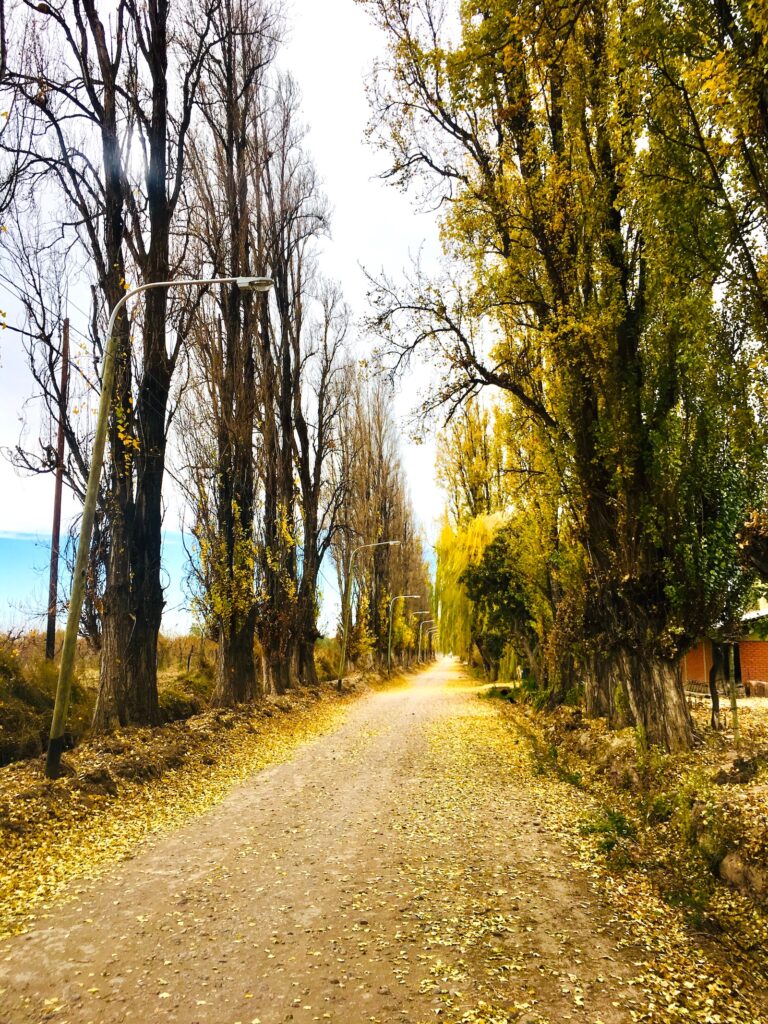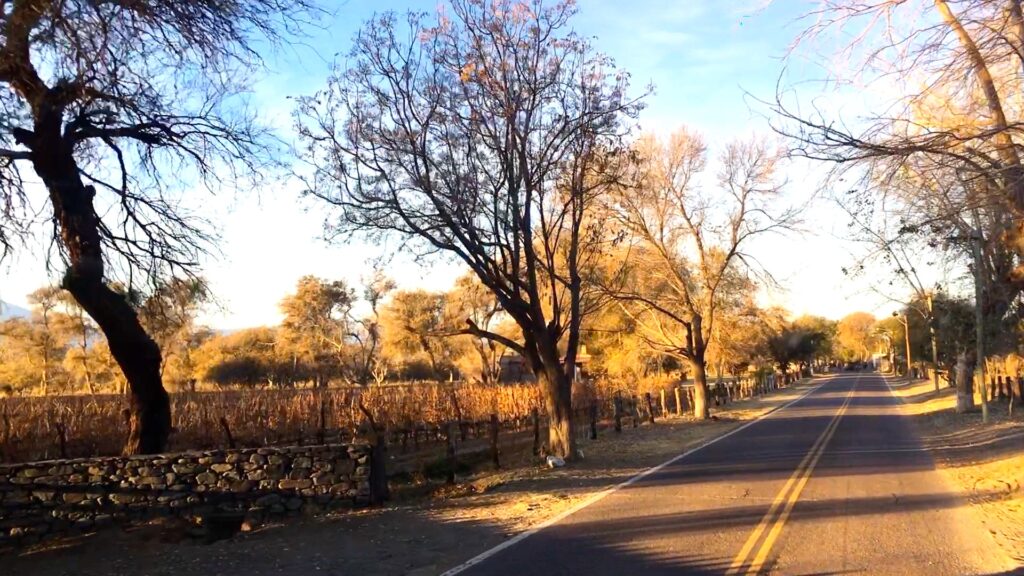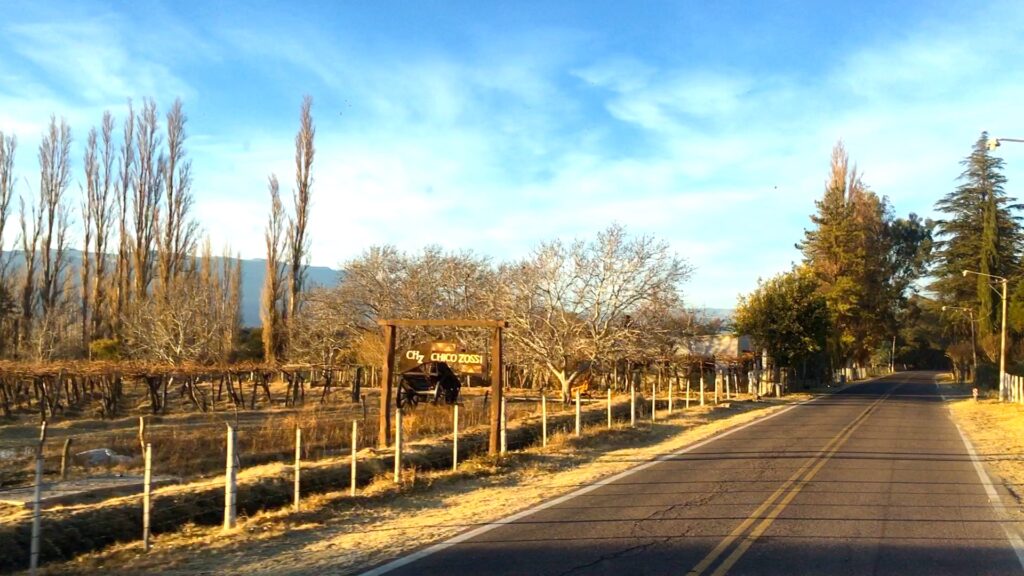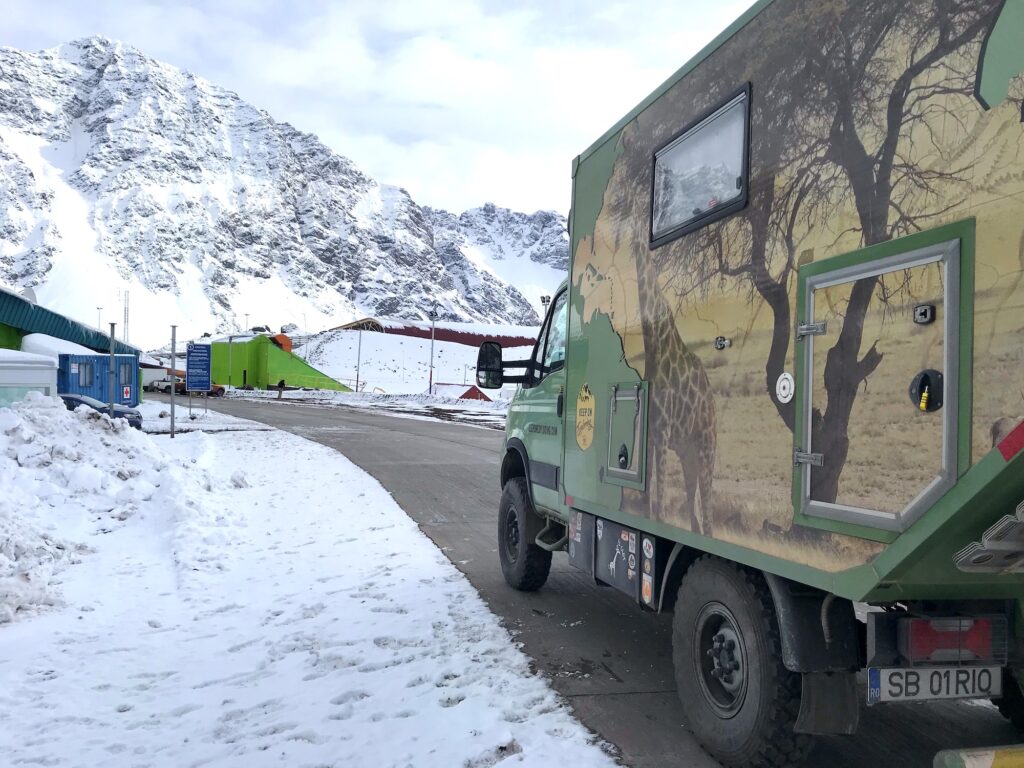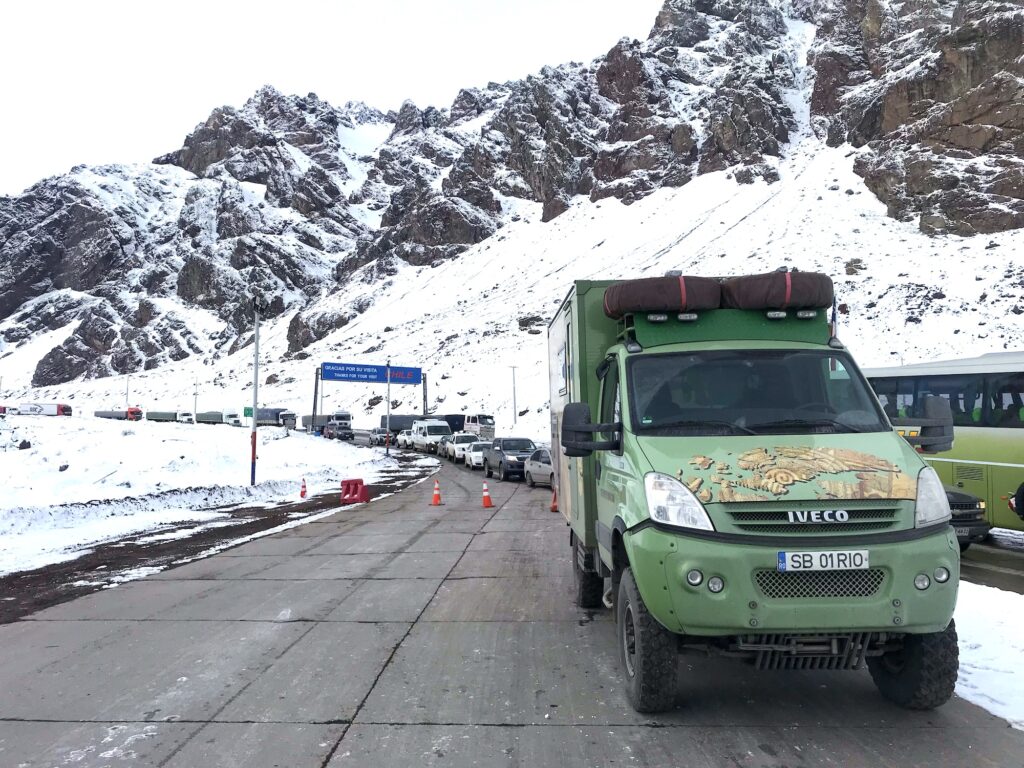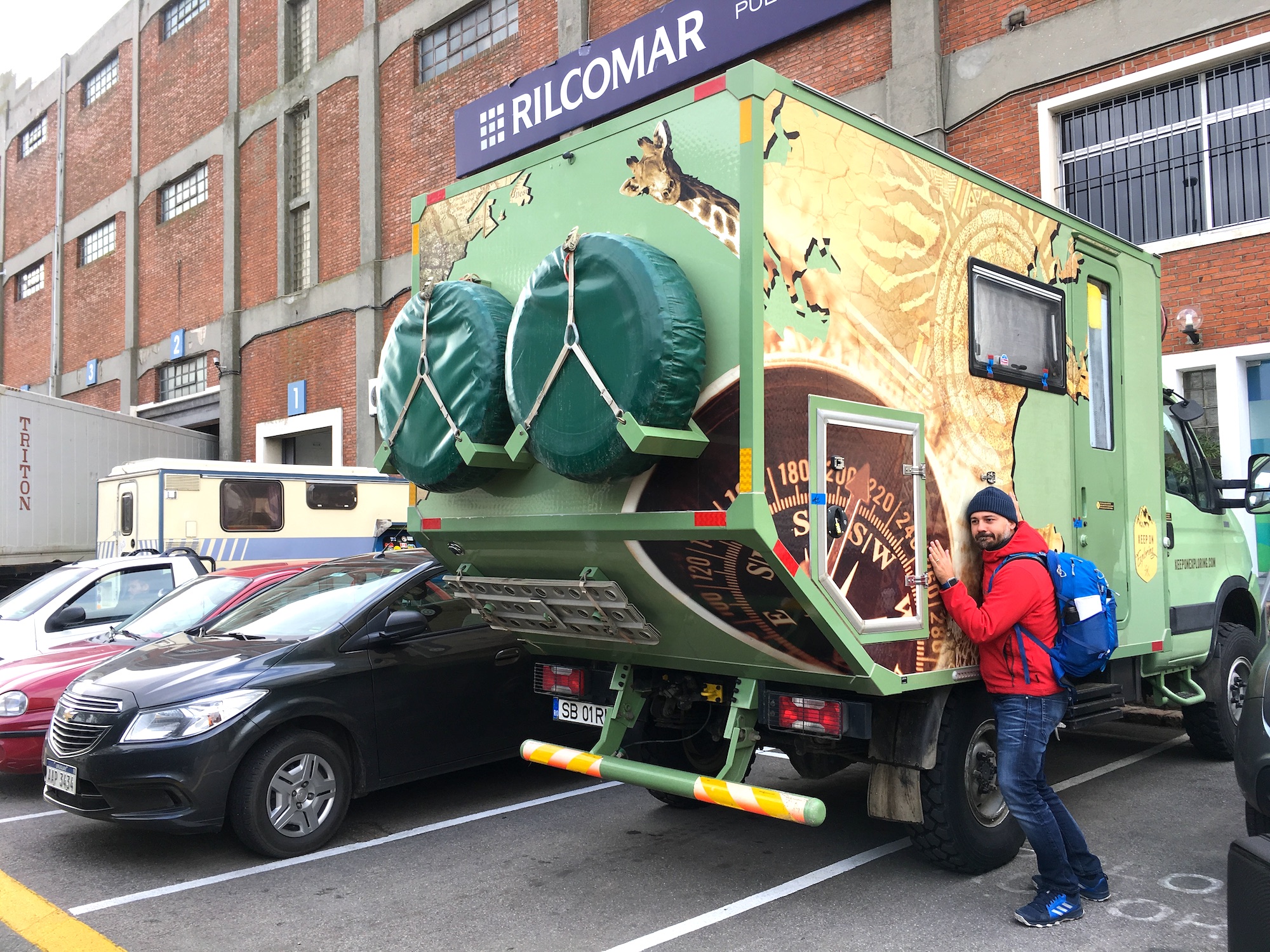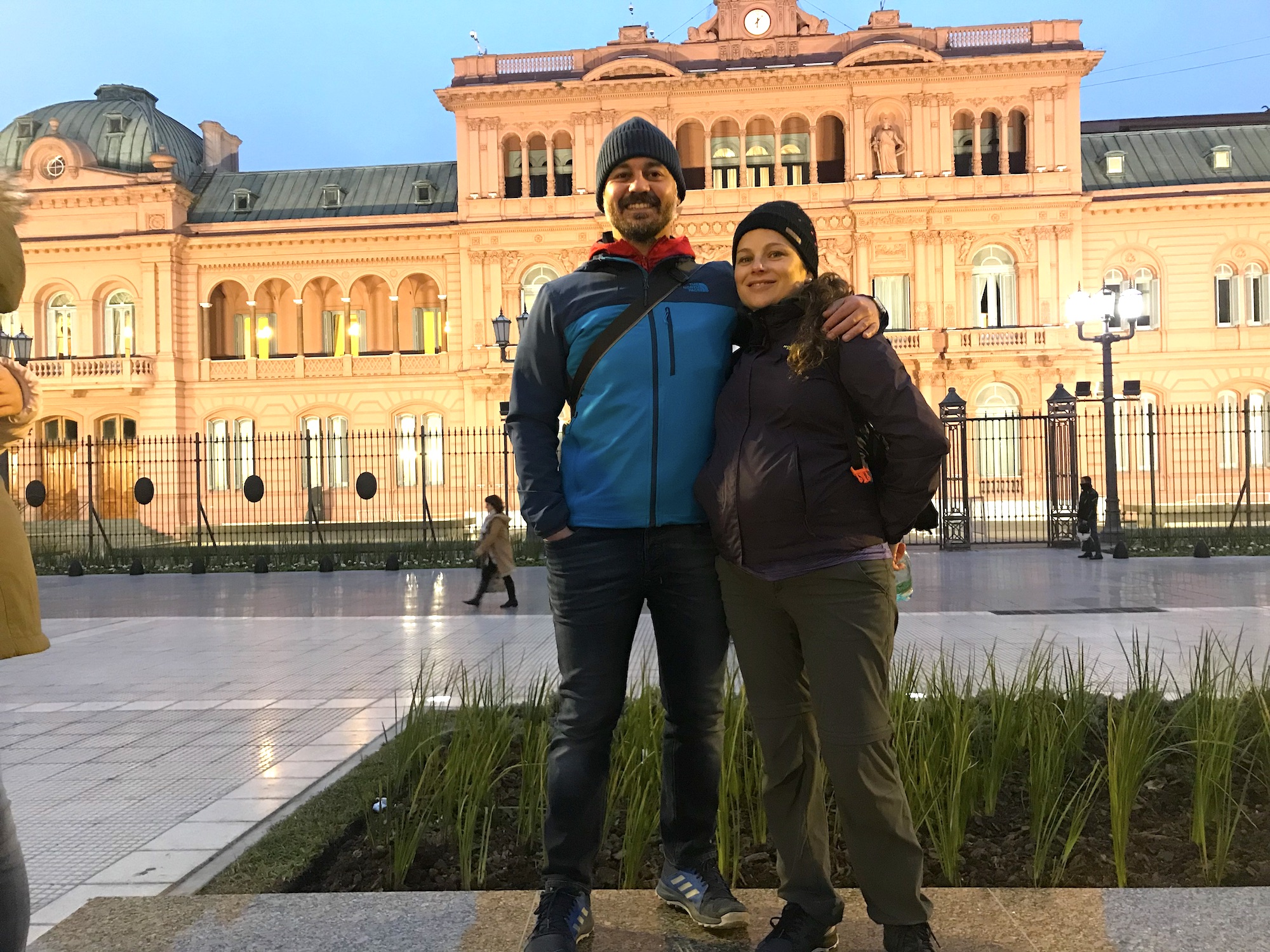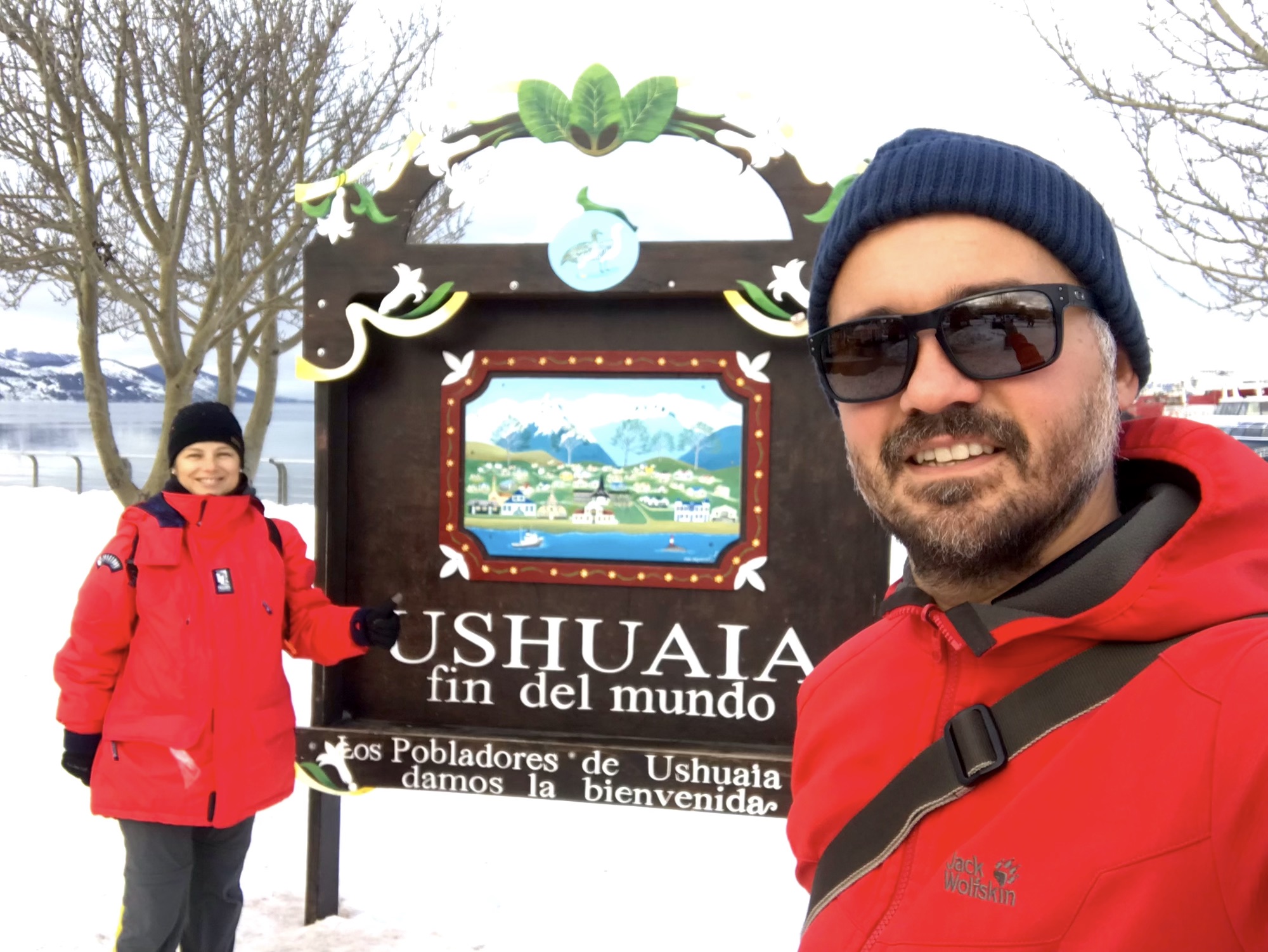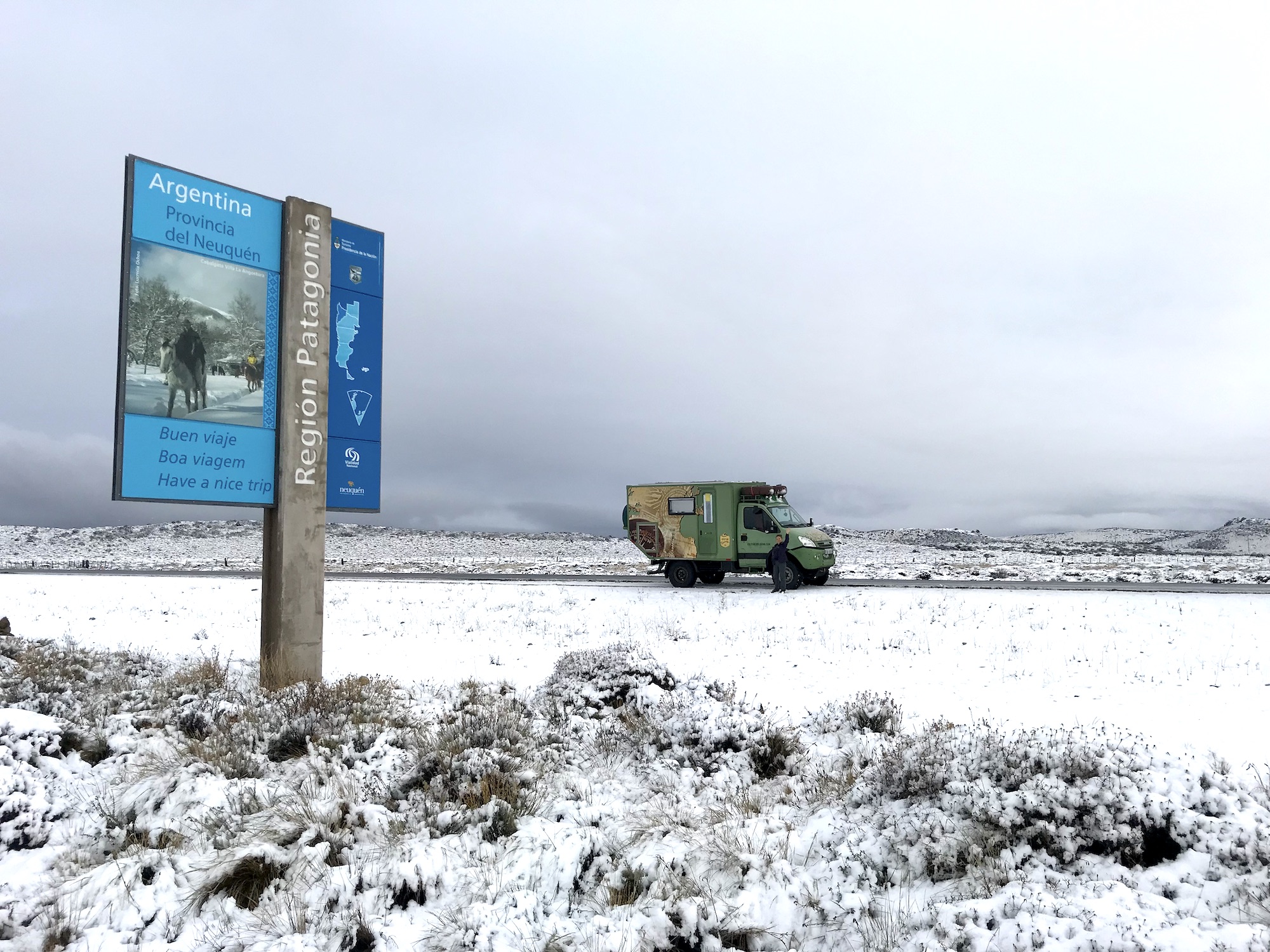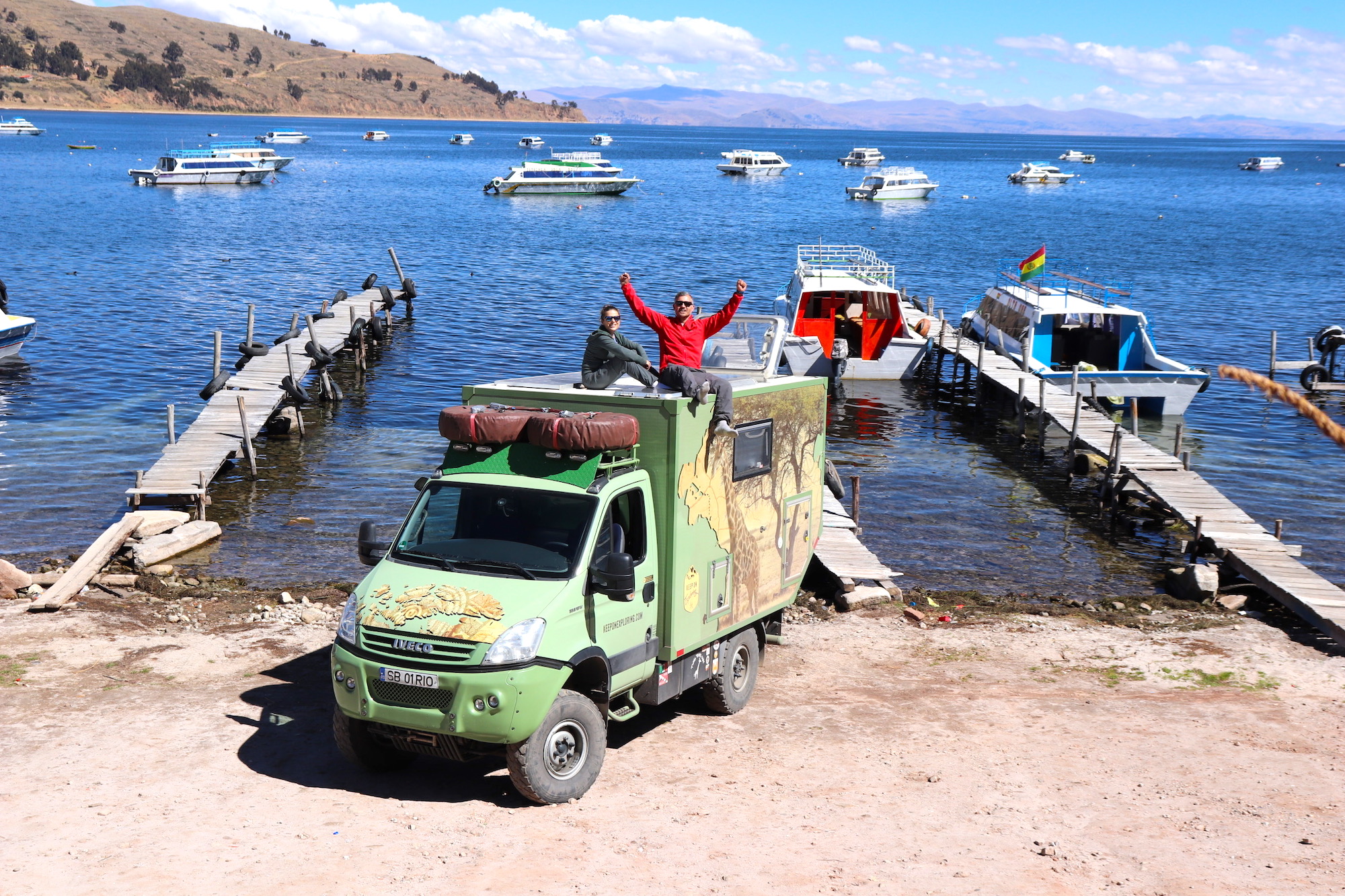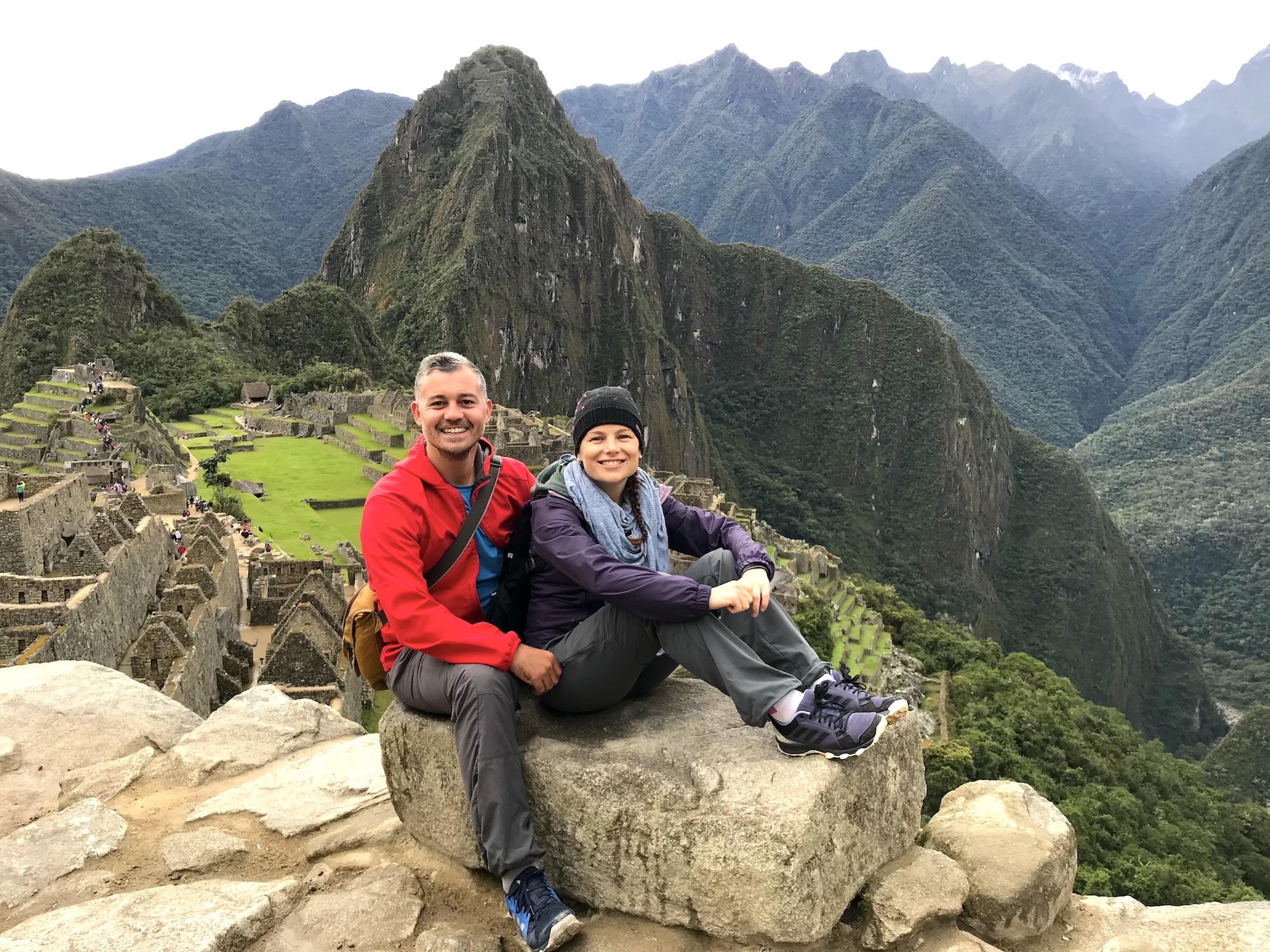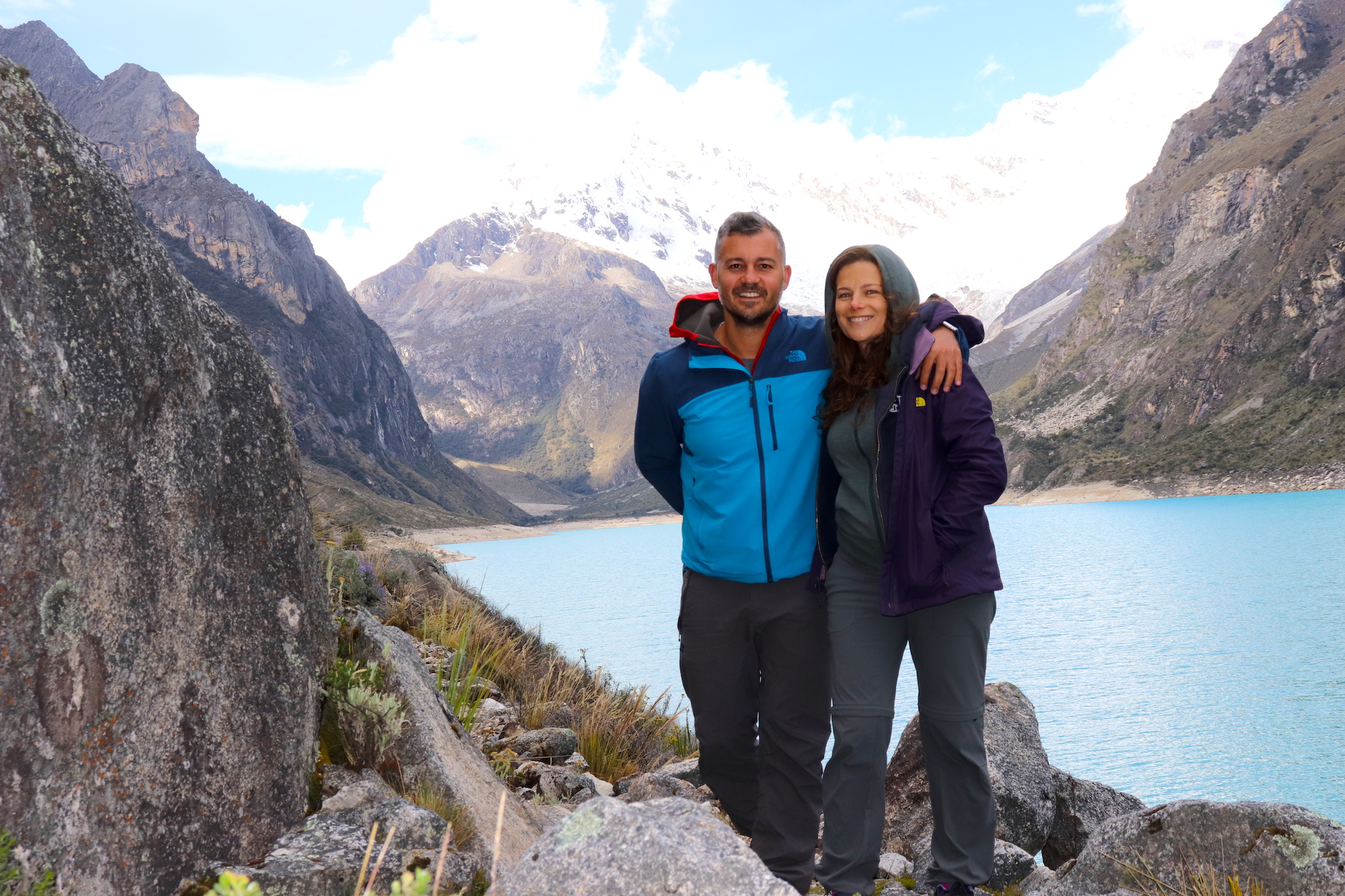Reaching Argentina we felt closer and closer to the finish line of our Pan-American journey, the southern most tip of the continent, Ushuaia. With few weeks left until the end of our lifetime adventure we were nostalgic, but as well animated to encounter a more European culture, an Italian inspired cuisine, wine tasting experiences in Mendoza, iconic landscapes in Patagonia and cultural escapades in Buenos Aires.
We entered Argentina through its northwestern border with Bolivia and followed the wine route from Jujuy to Mendoza, the largest wine producing province in South America, before we crossed into Chile. We were eager for those exquisite wine tasting and food matching experiences of the region. Despite the fact that we had to adjust to the "siesta" culture, we found an incredible friendly society, tasty food for affordable prices and a homey atmosphere. The first impression about Argentina felt like a breath of fresh European air.
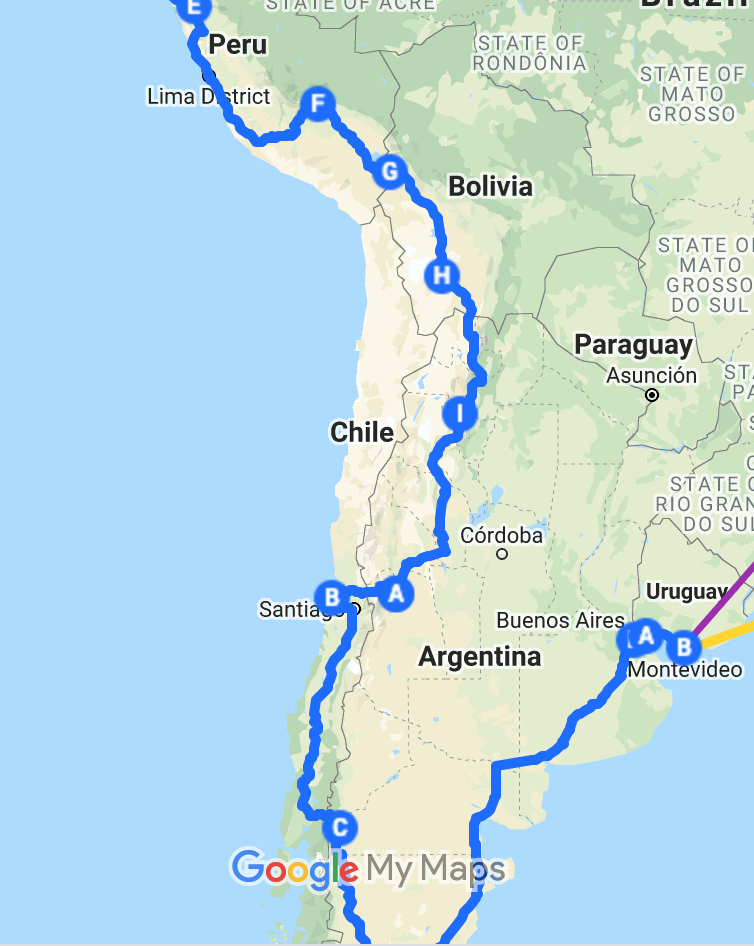
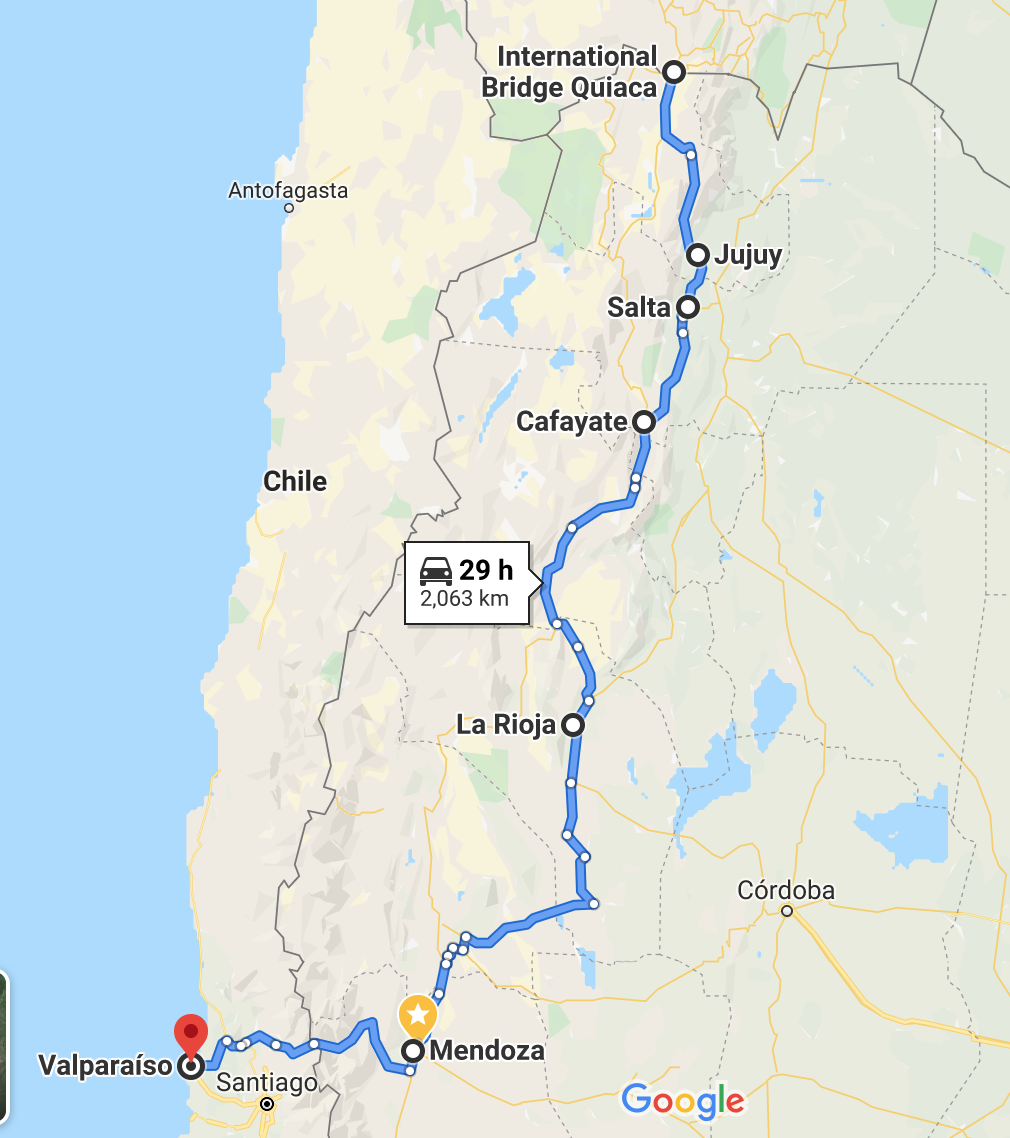
Crossing the border from Bolivia to Argentina
It was on a Sunday when we got to the border with Argentina. Theoretically we couldn’t enter the country since we needed a mandatory vehicle insurance for Brutus and all the shops selling this insurance were closed on a Sunday.
I was anxious to get out of Bolivia mostly because I wanted to descend the Altiplano to lower altitudes where the baby would be safer and to meet a new culture I was more comfortable with. JP on another hand wanted to hang around since there was the World Cup 2018 going on and Brazil was playing that day. Fair enough.
Adamant I convinced the customs officer to let us though with the promise that we would buy the insurance in the next town. Mission accomplished! But the next town where we could buy this insurance was 300km south. JP had to say goodbye to the football match, a long driving day was ahead of us.
After 300km driving towards Santiago de Jujuy we descended from about 3800m to 1200m altitude. Arriving in that region, I felt relived, while JP was fuming. He was definitely not happy missing the football match. Fair enough 🙂
Sometime is hard to always find a mid way stuck together 24h/7.
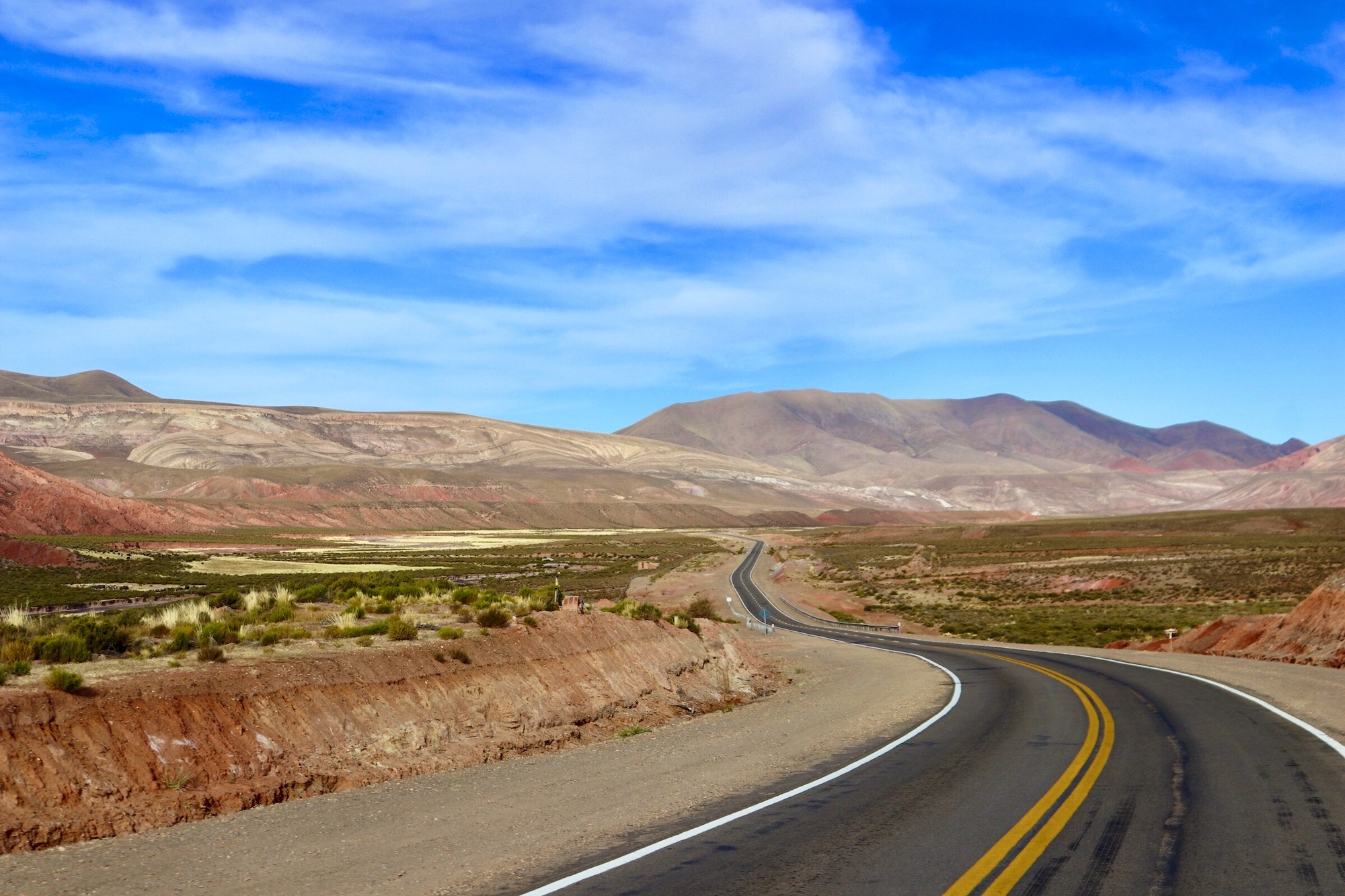
The first impressions about Argentina
Argentina is renown to have a more European culture compared with other South American countries. This is due to its several waves of European immigrants that came in the 19th century, which were largely influenced by Italians and Spanish. I was expecting an encounter with a more familiar culture, an Italian cuisine and friendlier people. And luckily the expectations did not disappoint.
From the first contact with the Argentinians we noticed an incredible difference in communication, comprehension and attitude comparing with the neighboring Bolivians. They were nice and willing to help out. We sensed a lively and vibrant society with more caucasian looking like features. It seemed two completely different worlds in terms of mentality, culture and energy.
As we arrived in Santiago de Jujuy we spent the night in a campsite. It was for the first time since USA that we found one with fire pits, picnic tables, toilets and showers. It was obvious Argentina had a camping culture compared with the other Latin American countries we visited on the continent. Then I understood why did we meet so many Argentinians on the Pan American highway. Traveling and camping is a lifestyle for many of them.
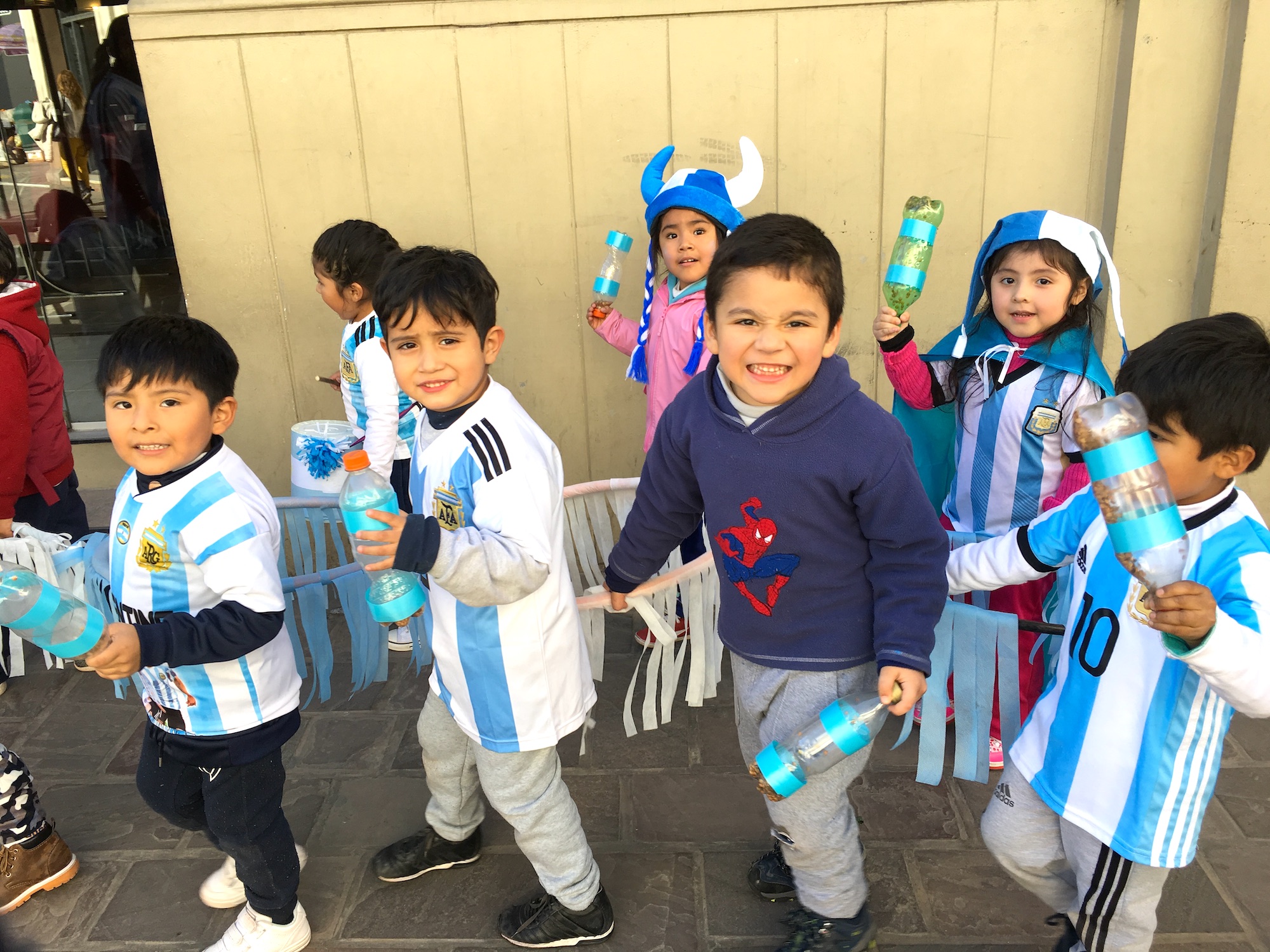
Even the air felt like in Europe in Argentina
The climate was dry and temperate. The air felt like a late autumn sunny day in Europe. As the day cracked the sun started to hit up the camp allowing us to slowly relax after the long driving days. We needed that feeling of safety and tranquility.
JP took the chance to do some small fixes at the truck while I had a lazy morning preparing the food. It was a great opportunity to have some space from each other and to cool down the cumulated tension between us. JP didn’t forget that easy the football episode.
By lunch time, Aida and Paul, the enduro riders we met in Bolivia appeared from nowhere at the campground. So we took the chance to have our first Argentinian dish together in the nearby restaurant. We indulged into home made traditional ravioli and minestrone soup. “Gosh! I missed so much this taste of home made pasta and soup” I told our friends. “Tell me about it”, Paul with his Italian roots was answering. “The food is delicious” Aida added. We were all so happy for the treat after the scarcity we endured in Bolivia.
The Italian inspired cuisine, the communicative people and the fresh dry air gave us a homey feeling and that made me feel so much safer in Argentina. Phew!

My first cultural challenge: the siesta!
After lunch we had to solve all the admin things necessary when entering a new country: to get a sim card with internet, the mandatory vehicle insurance, to exchange some money and to do the groceries shopping. While JP chose to stay at the campground and do the truck fixes, I took a ride in the city of Santiago de Jujuy to resolve this admin part.
I realized for the first time a different working system than in any country above the continent. There was the inherited “siesta” from the Spanish culture. People close their stores from 1pm up to 4-5pm to take their extended family lunch breaks.
Due to the powerful sun that starts around noon, the Spaniards adopted this habit. The funny and intriguing part is that the Argentinians assumed the same culture like in Spain, but without the powerful sun :))
Some restaurants take the “siesta” and open for dinner only after 9pm. It is normal for Argentinians to have dinner from 10pm onwards. That was not matching our traveling routine. We had to wake up every morning very early for our long drives. We would have lunch exactly when the restaurants would be closed for “siesta” and we were sleeping exactly when the restaurants would open for dinner.
In Jujuy I couldn’t get it right
In Jujuy I couldn’t get it right. Arriving after lunch time in the city I found most of the shops closed and while the network provider for the sim card was opened the operational style was slow and full of errors. The system of the telecom company kept failing. Although the employees were kind and helpful, trying to fix the issue in their own laid back style, I couldn’t get a functional sim card with internet by the end of the day.
Moving forward to the car insurance provider I encountered the same issue. After I waited for the shop to open due to “siesta”, the system could not operate our insurance due to another network failure. I couldn’t resolve neither the sim card nor the car insurance that day. “How can this be possible? Something this simple can’t be done in one day?”, I was intrigued.
Regardless of the admin set backs walking the streets of Santiago of Jujuy was relaxing. I felt back into a conventional society with a busy but pleasant atmosphere, with people zooming the streets, children coming out of school, smell of sourdough bread and croissants, pastries and bakeries at every street corder. Heaven for me! Of course I tried all the pastries my brain was craving for.
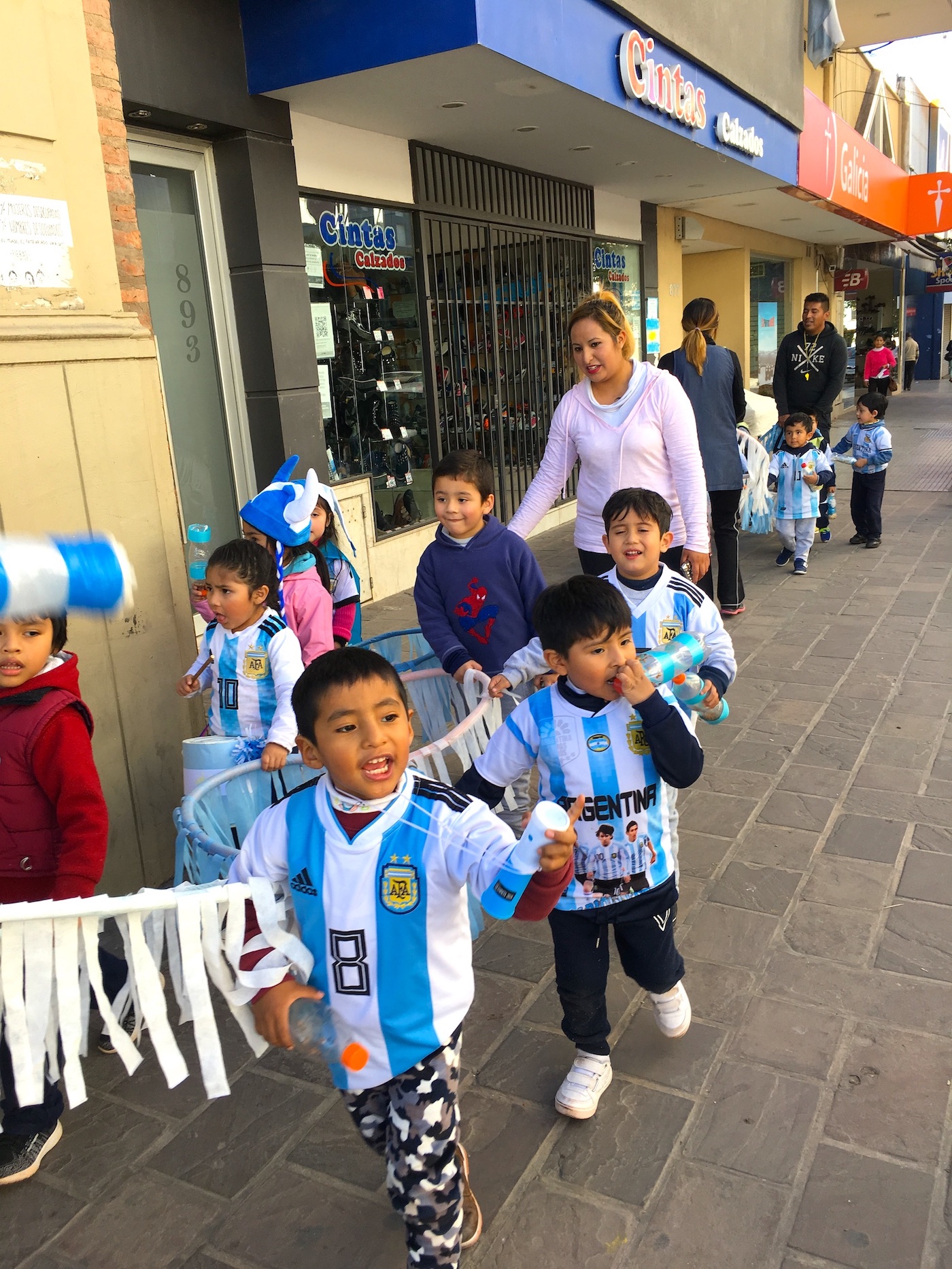
Back to the campground
By evening I returned to the campground managing the groceries and exchanging some money.
JP was fuming: “How comes you were not able to get the insurance and the sim card with internet? This is something so simple. Tomorrow we have to leave”, he was questioning what were I doing wrong. “I know that tomorrow we have to leave.” I added. “Here things seem to move a bit different than elsewhere. First I had to wait because of the “siesta” and then the system literally did not work when I was trying to buy both the sim card and the insurance. Plus the people here seem to operate very slowly. Can you believe it?”, I tried to keep my cool explaining.
“Right” JP added. He didn’t seem convinced. Somehow he made me feel it was my fault. We tried to move on with the episode being careful not to escalate it into another conflict. Aida and Paul were waiting for us. They prepared a delicious Argentinian beef burger on a barbecue they improvised, saving the night with their good mood, humor and nonjudgmental attitude. We felt comfortable in their company enjoying an easy going evening by the camp fire. It definitely helped out to calm down the tensions between me and JP.
My sweet revenge in Salta
The next morning we had to say goodbye to our friends and continue south towards the wine region of Salta. Aida and Paul decided to head to Brazil to warmer temperatures. Rio de Janeiro was definitely a better proposition in that sense.
After all the ascent and descent Brutus had to perform through the Andes, JP felt we needed new checks of the breaks. So we tried to service the truck in Salta.
When we got there he faced the same challenge I came across with in Jujuy: the dealer was closed due to the “siesta” time. It wouldn’t open only in two days since the following day was a national holiday. We had to leave already the next day. So, another problem not fixed!
Trying to find a network provider and get the sim card JP encountered the same situation I did in Jujuy. The system of the internet provider kept failing. He waited for almost two hours to get it done, while I was just enjoying my sweet revenge over a hamburger at McDonalds :))) feeling satisfied that he finally understood the working style in Argentina.
Embraced by Argentinian kindness
On our way out of the shopping center we saw a bakery shop with an abundance of croissants and “semi lunas”, a popular Argentinian pastry, exhibited in the showcase. I wanted a piece of everything. Finding out that I was a foreigner and seeing me so excited, the manager gave me couple of pieces for free. I was impressed with the kindness and hospitality. People were just so welcoming there.
Luckily they didn’t know JP was a Brazilian especially during the World Cup 2018 :)))) He fancied that “undercover” Romanian nationality he borrowed for a while. He felt liked and got the chance to discover a side of Argentina he did not see while growing up in the neighboring Brazil.
JP then admitted: “I did not expect they are such nice people actually. I want to try the card of “the foreigner” in Brazil too :))… to see how do Brazilians treat foreigners? How do foreigners feel when they visit Brazil?”. Well, I knew from my own experience they treat foreigners very well too. They are known to be one of the friendliest people on the continent.
It is a matter of perspective, isn’t it?
On route to Cafayete
Moving forward on our way to Cafayete we discovered a landscape very similar with the one we encountered in Utah state of USA: lots of red canyons, hoodoos and naturally sculptured formations. It seemed like a mirroring effect of the northern hemisphere. One of the shapes that stood out was The National Amphitheater, a large semi-enclosed rounded rock with a flat ground, recognized to be unique for its acoustics. Pretty cool and unexpected.
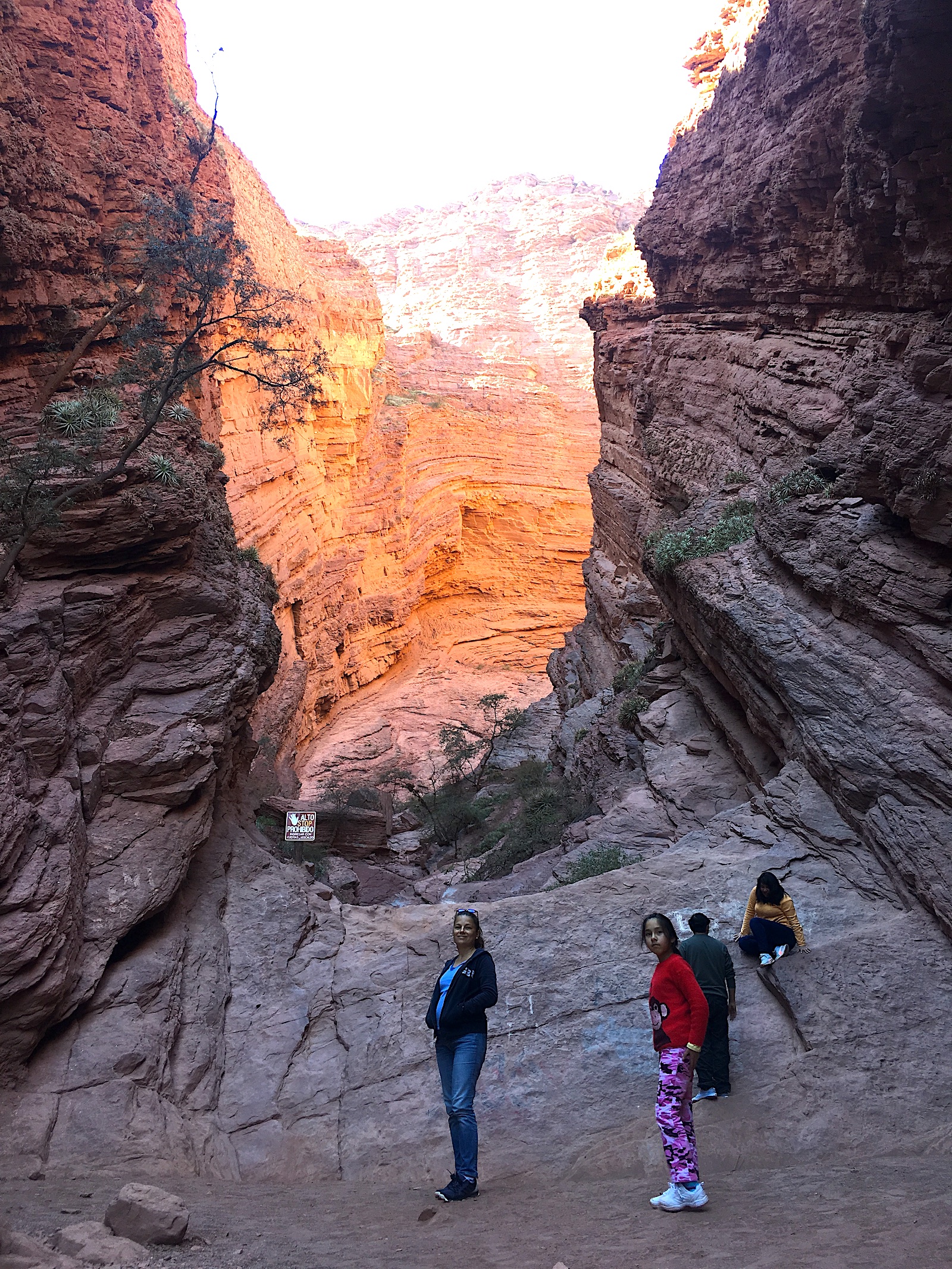
Another unexpected moment was when we met a French family with three kids cycling on the byway. The children were around 11, 9 and 3 years old. They stoped on the side road to buy street food for lunch. “Where are you from? I asked. “We are from France. We just started our journey here in Argentina and we plan to head to Peru” the father answered excited. “We have met before a family from France with three children just like yours cycling in Mexico and then we met them again in Panama”, I added.
“We know them”, the woman answered. “We will meet them soon in Bolivia” she answered smiling. “Did they already get to Bolivia?” We were numbed to find out how fast they moved, almost with the same speed like ours traveling in a vehicle.
“When you will get to Bolivia it will be pretty cold on the Altiplano”, I warned the parents seeing them wearing shorts and t-shirts. “We know”, they answered unconcerned. They didn’t seem intimidated by the weather conditions, nor by the encounter with a reputable unfriendly culture. On the contrary, they acted pretty seasoned and ready for the adventure, while the kids seemed to have the time of their life. It was inspiring to see another brave and daredevil family.
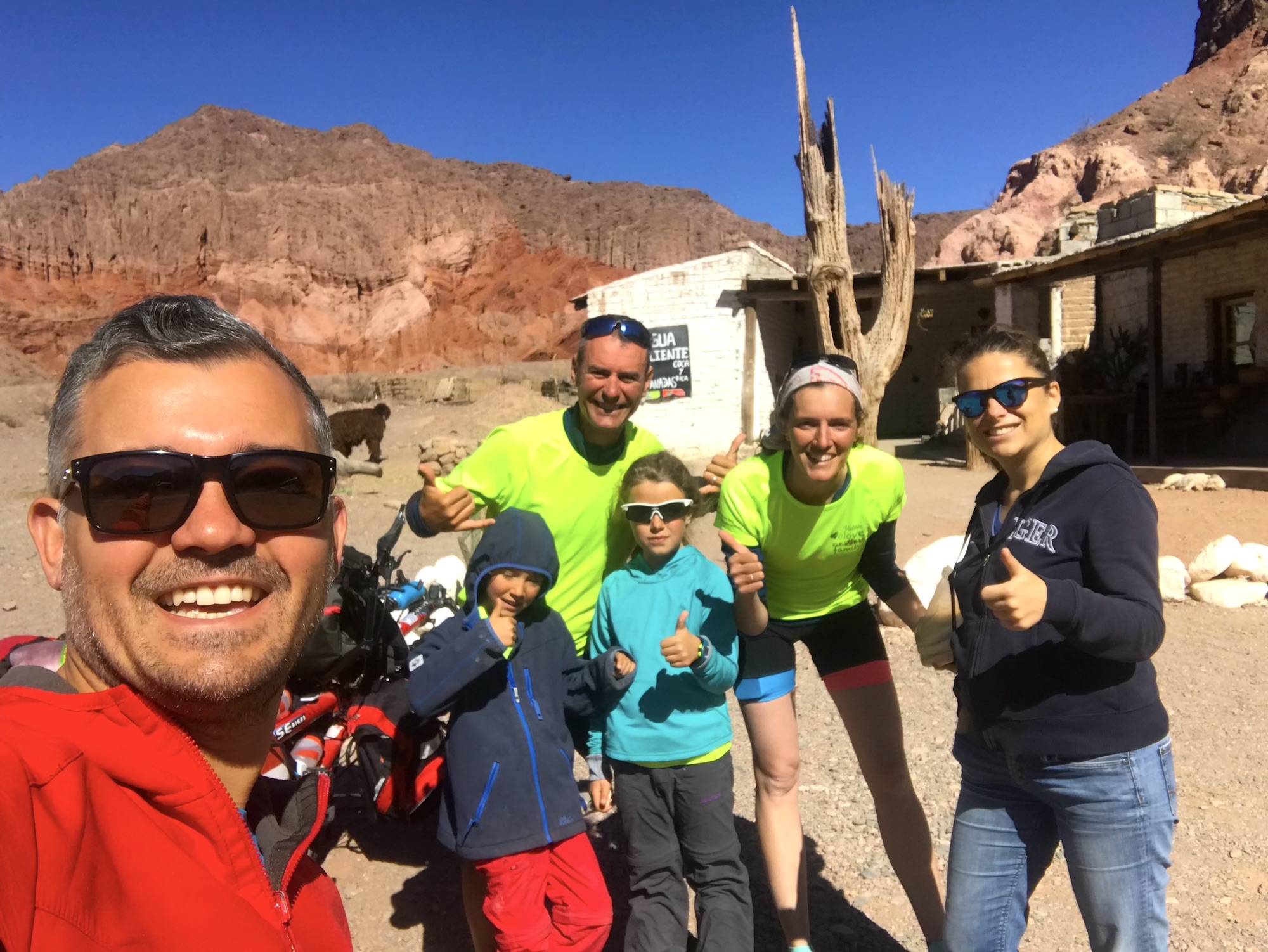
Cafayete
Cafayete is a boutique town in Salta province renown for its many vineyards and for the originality of its wine. Due to the low humidity and mild weather they produce a specific wine called "torrontés".
When we reached Cafayete we were so excited for those exquisite wine tasting treats. Therefore we chose a nearby vineyard called Nanny Botega. Being pregnant I was tired after the road trip. I needed a nap first. JP a wine passionate, could not hold his excitement and he went ahead for a pre-dinner wine tasting experience. His mouth was littering for a while thinking of all that good wine waiting for him. Luckily he had his treat and tried couple of wine selections at Nanny Botega, because after I woke up the restaurant closed due to “siesta” :))
Strolling on the streets of Cafeyete we found a calm atmosphere of a small and coquette provincial town. Most of the action was happening in the city center with plenty of specialized wine shops, craft markets, souvenir shops, a selection of exquisite “bodegas” which were not opened and lots of corner shops with fresh “empanadas” (a typical Argentinian pastry with filling), ice-cream and “dulce de leche” (a delicious local sweet done from slowly headed sweetened milk). We were happy to indulge in those available treats.
On our way to Mendoza
From Cafayete to Menzoda we had about 1000km to cover. We needed two driving days and a stop over in La Rioja, to finally get to the wine capital of Argentina and the region where the Malbec wine was created.
That day heading to La Rioja, Argentina was playing Croatia during the World Cup 2018. We ended up in a Shell gas station watching the football match together with dozens of passionate supporters. Argentina lost with 3-0 to Croatia. Seeing the disappointment in the eyes of all those Argentinians was not something pleasant, not even for JP :)). They were heartbroken. What a dramatic day for the football community.
We continued from La Rioja to Mendoza driving 600km on a straight line with plenty of vineyards popping up on the side road. It was the longest day drive we ever had in our expedition. Day dreaming on the co-pilot seat and being so close to the end of our journey my mind was capturing some of those tremendous experiences and learning lessons we had during our journey.

Reflections approaching the end of our journey
I was thinking how light does it feel to live with less and how little do we really need to be happy. How relieving it is to focus on things that really matter and how beautiful it is to live surrounded by nature. Somehow I didn’t want that freedom to end, I didn’t want to return to “real” life. I was reflecting on how often we overcomplicate our existence being busy to cumulate “stuff” or “titles” that we don’t really need to be happy.
I was thinking at all that tremendous untouched nature and wildlife we encountered, that made us feel so embraced and energized. I was reflecting on how much does the nature gives us and how often we act with entitlement when our societies is destroying it for immediate commercial gains.
I was thinking at all those varied cultures we met. That we need to appreciate this diversity, to learn from it, to be less judgmental and more opened minded. I realized that people no matter where they come from want similar things like: security, prosperity, love and harmony. We just have different ways of getting the same things.
We found nice and kind people on the way, overall with good intentions and always willing to lend a hand. Somehow it helped me to regain hope in humanity and goodness. I was thinking how on earth can we be fooled by politicians that are looking to gain power through division and hatred. I was reflecting on the fact that we are more and more a globalized society, interconnected and interdependent, that we need to think more as a united power rather than divided societies by nation states, religions and cultures.
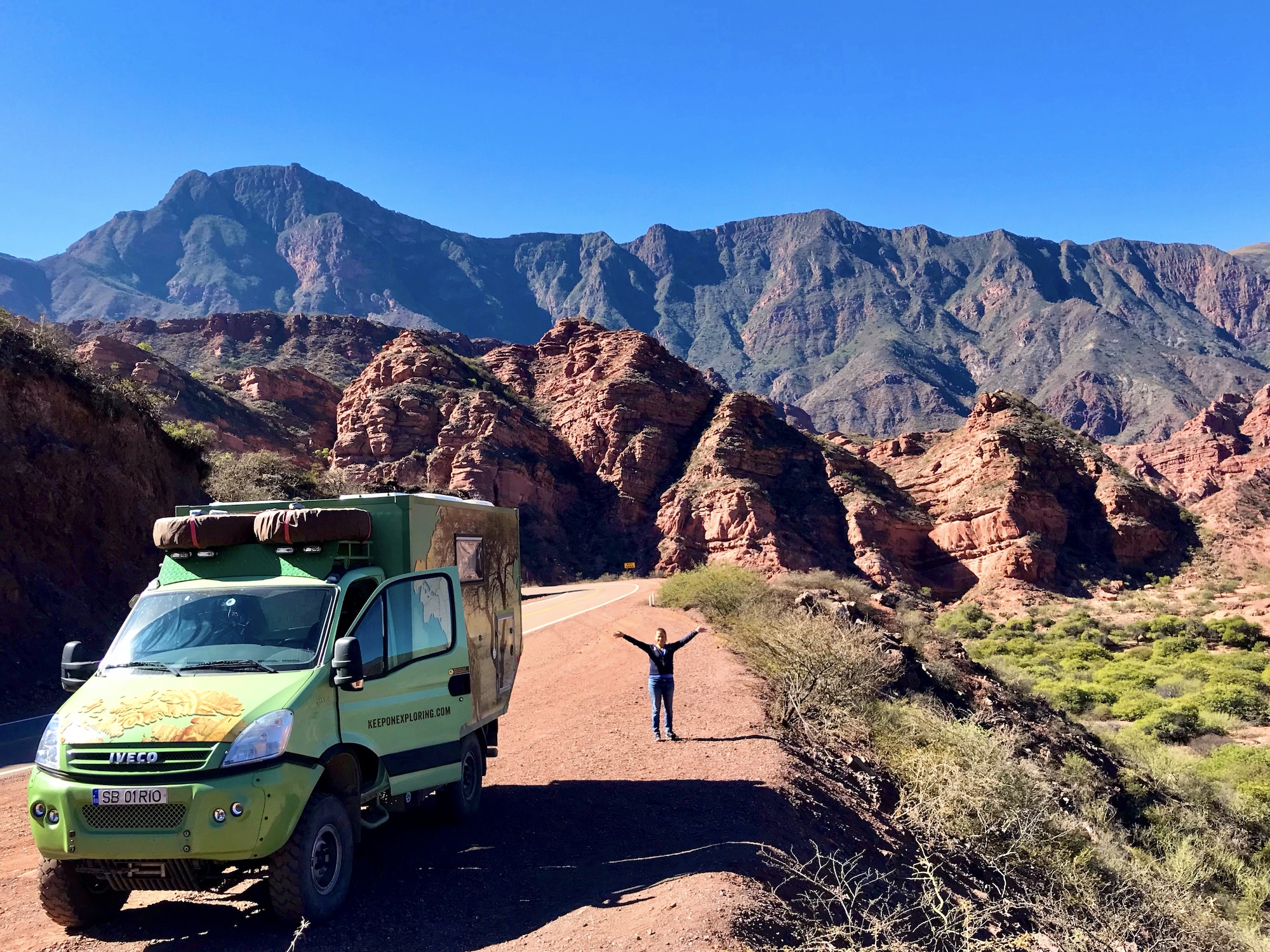
Mendoza - the wine capital of Argentina
With my mind wondering the hundreds of kilometers were flying and we soon reached Mendoza, famous for being the largest wine-producing area in South America and listed one of the Great Wine Capitals in the world. Located on the east flank of the Andes it makes a perfect region for wine and olive oil production.
People from all over Argentina and the neighboring countries come to Mendoza for enotourism, a kind of tourism that proposes wine tasting experiences matching three to five course menu, vineyards visits, harvesting tours and wine purchasing from the source. I remember researching amongst hundreds of vineyards to get the best experience for our planned budget. We were so excited for that spoiling moment.
But before the much awaited wine tasting experience, we had to change two tires of Brutus and rotate the others in Mendoza.
When we got to the city we realized it was much bigger than we anticipated. The distances between the planned vineyard visits and the tire dealer were considerable. We had to forget that night about camping in those epic estates and overnight near the tire company in a gas station.
Exhausted as we were after a full day drive we just wanted a good treat and then rest. Forget about it! With all that great food offered by the locals, they were never opened when we needed, “siesta” culture kept hunting us.
Changing the tires in Mendoza
The next early morning we were at the Michelin dealer to change and rotate the tires. They took 4 hours and a whole morning for the operation. By the time they finished it was already noon time.
People were incredibly nice, but their level of efficiency and speed was below our imagination. We couldn’t get too upset, they were always so well intended. We reckoned more and more it’s a cultural thing.
For those 4 hours of work two man produced 30 euro plus a tip of 6 euro. Completely inefficient for any business, but it worked out for us. In the end it ended up to be an economic affair and we sorted our issue. That was what mattered.
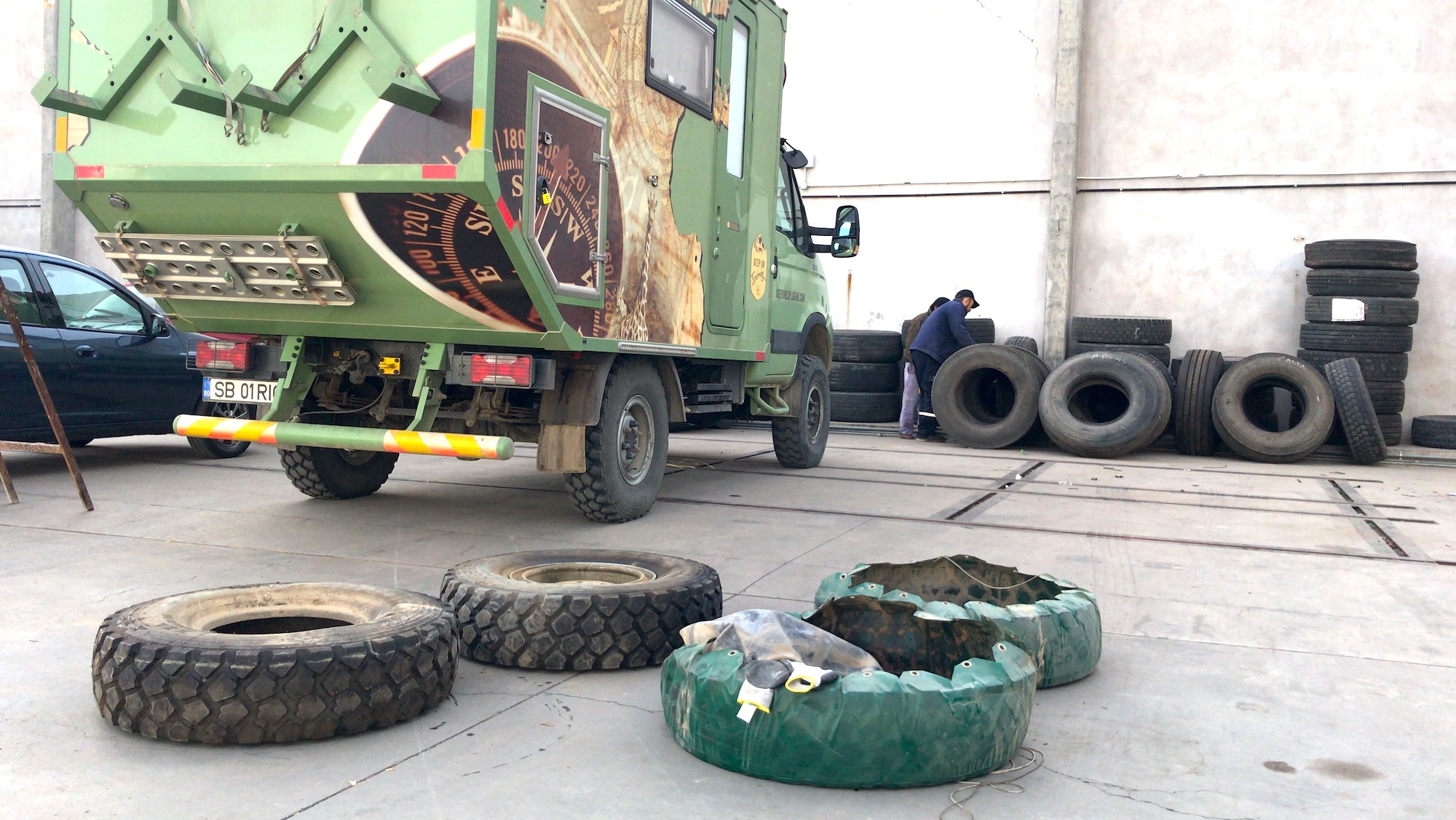
… and the “siesta” sage continued
In Mendoza we just couldn’t get our minds away from the wine tasting experiences paired with a refined selection of food, but as we left the tires dealer it was already 1pm. Here we go, another “siesta” time. We had to forget about eating in a proper restaurant until 9pm. Actually we had to forget about it all together that day, at 9pm we would be already snoring. Pity we had only two days in Mendoza needing to advance with our road journey in Chile.
We spent the rest of the afternoon trying to discover the wine neighborhoods of Maipu and Lujan de Cuyo driving. There were so many estates and great places but all closed for the experience we were looking for. Despite the timing issue we came across with a scenic road view sprinkled with the color changing season. Such a calm and relaxing ambience.
We went to rest that night in a campground and hoped for the best the following day. It was our last day in Mendoza.
Guess what? It was a Sunday! We realized that most of the “bodegas” were closed on a Sunday :-))))
That was our luck in Argentina’s capital of wine. They had great food to offer, great wine, great prices, but most of the time they were not opened. It was either the “siesta” time, the holy Sunday or a national holiday going on.
If you search, you find!
Eventually we found a place to have lunch next to an YPF gas stations. Not very romantic to have an exquisite experience next to a pump station, we thought. But the evaluations on Trip Advisor were good, so we gave it a try. At that point we didn’t have a lot of options.
We couldn’t had been more mistaken! We enjoyed the best meal in a while: a three course menu paired with Argentinian wine. I started with provolone cheese with salad, followed by an Argentinian beef steak and tiramisu for desert. JP had salad with chicken as starter, goat meat steak as main and a creme brulee for desert. All these were accompanied by hot bread, an amazing olive oil and a great service. Moreover the price was excellent for that five star experience due to the peso devaluation. It would have been otherwise so expensive in other World Wine Capitals.
At the end of that feast we were satisfied and happy we finally had our treat. We strolled back to the truck and called the night watching some movies.
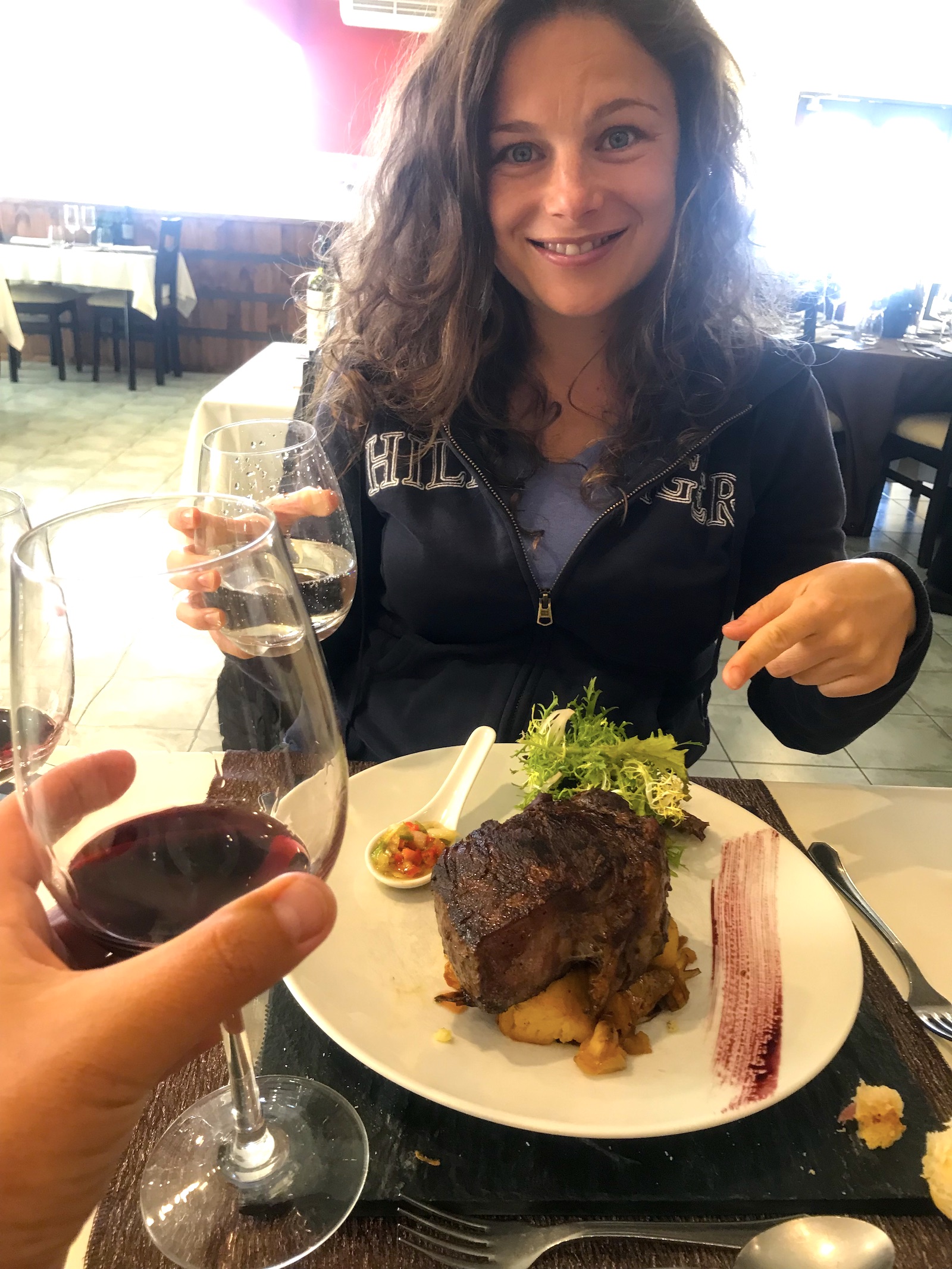
We planned to cross to Chile the following day via Paso International Los Libetadores, where Aconcagua peak (the highest mountain of the Americas) can be seen from the road. The pass used to be a strategic link between the Chile’s Pacific seaport, Valparaiso and the capital of Argentina, Buenos Aires, avoiding an approximate 5,500km journey by sea around the continent.
Since it was late autumn we were lucky the snow was not that abundant and the “paso” was opened.
From the dry land of the wine region with its late autumn scent, we ascended the Andes towards the border with Chile on a winterish landscape revealing majestic snow powdered peaks. We came cross with a ski resort that run over a serpentine road and of course the supremacy of Aconcagua mountain. We felt lucky for that milestone.
Entering Argentina through the northwest border was a great introduction into its vast land, renown wine regions and more European culture. We were encouraged by the affordable prices, the quality of the food and the very nice people. We were definitely excited to return in Argentina from south of Chile on our way to Patagonia, “Fin del Mundo” and Buenos Aires.
We just needed to adjust better to the “siesta” culture 🙂
